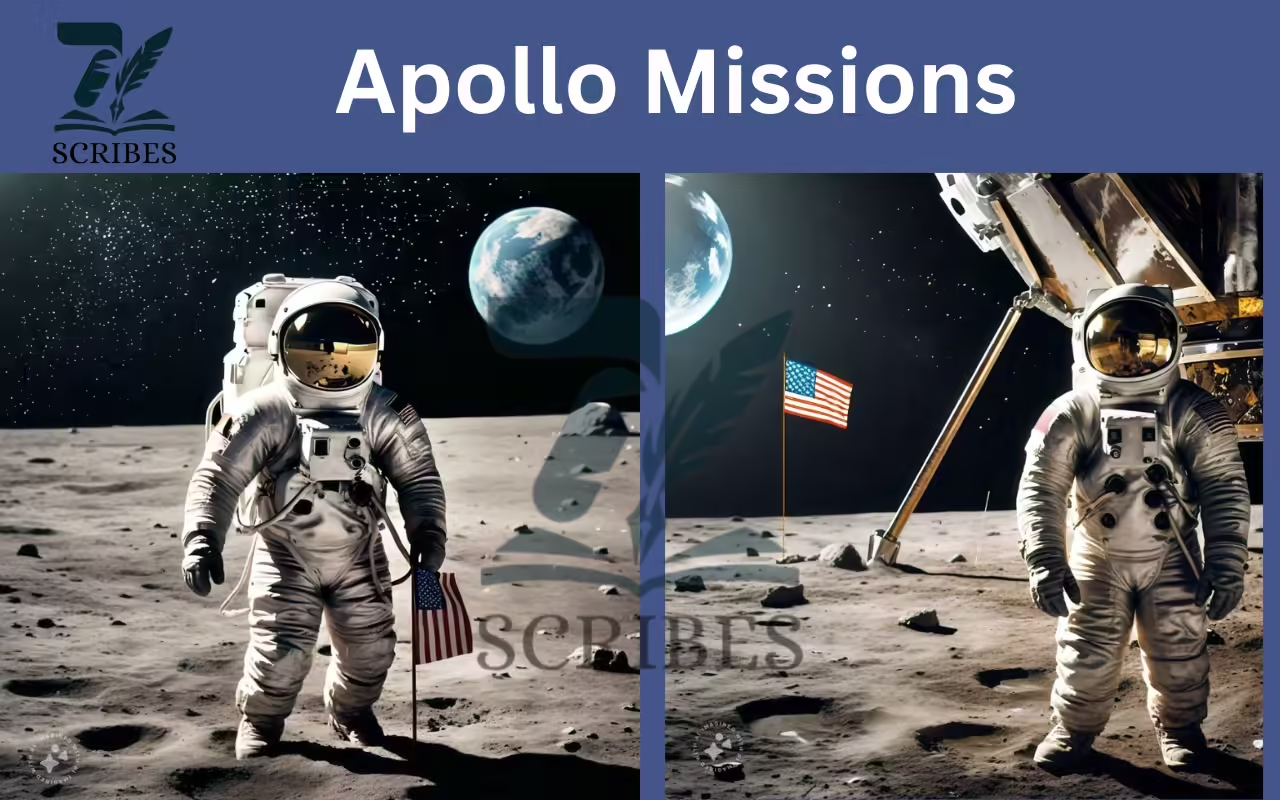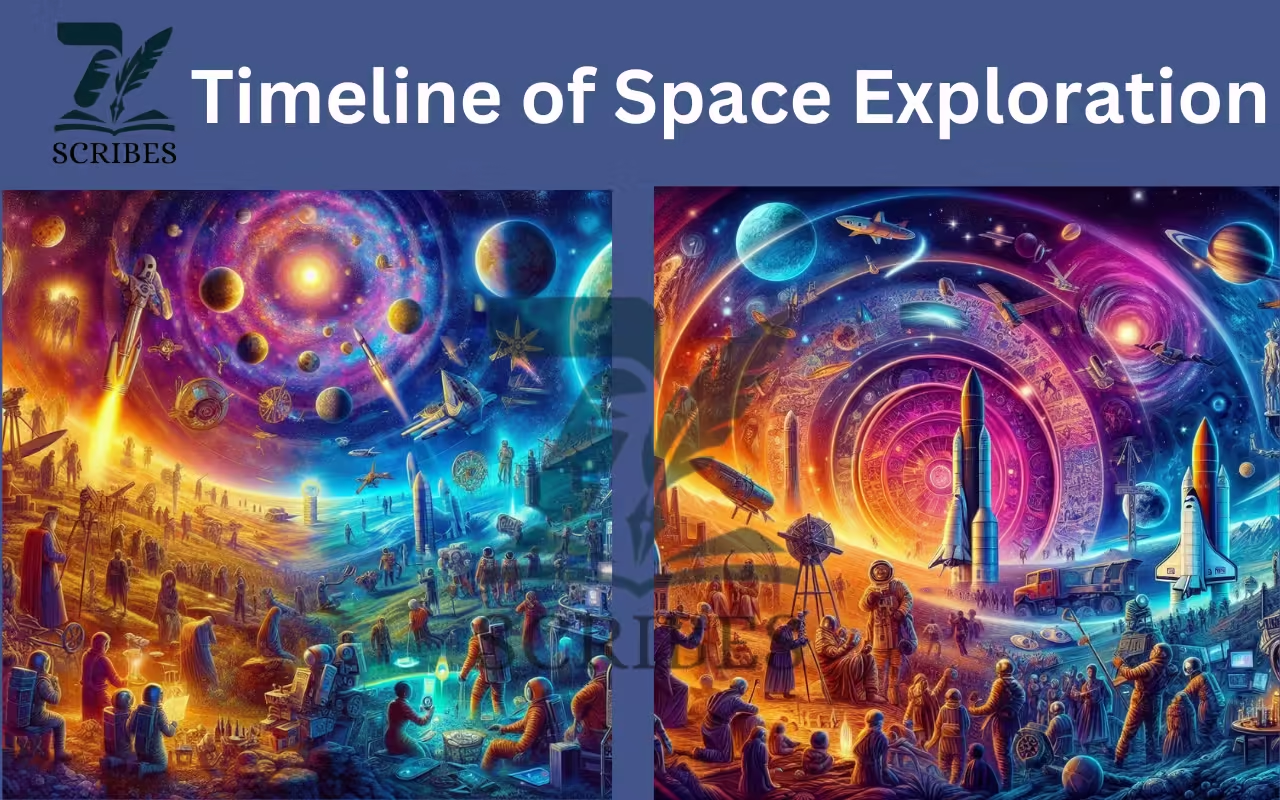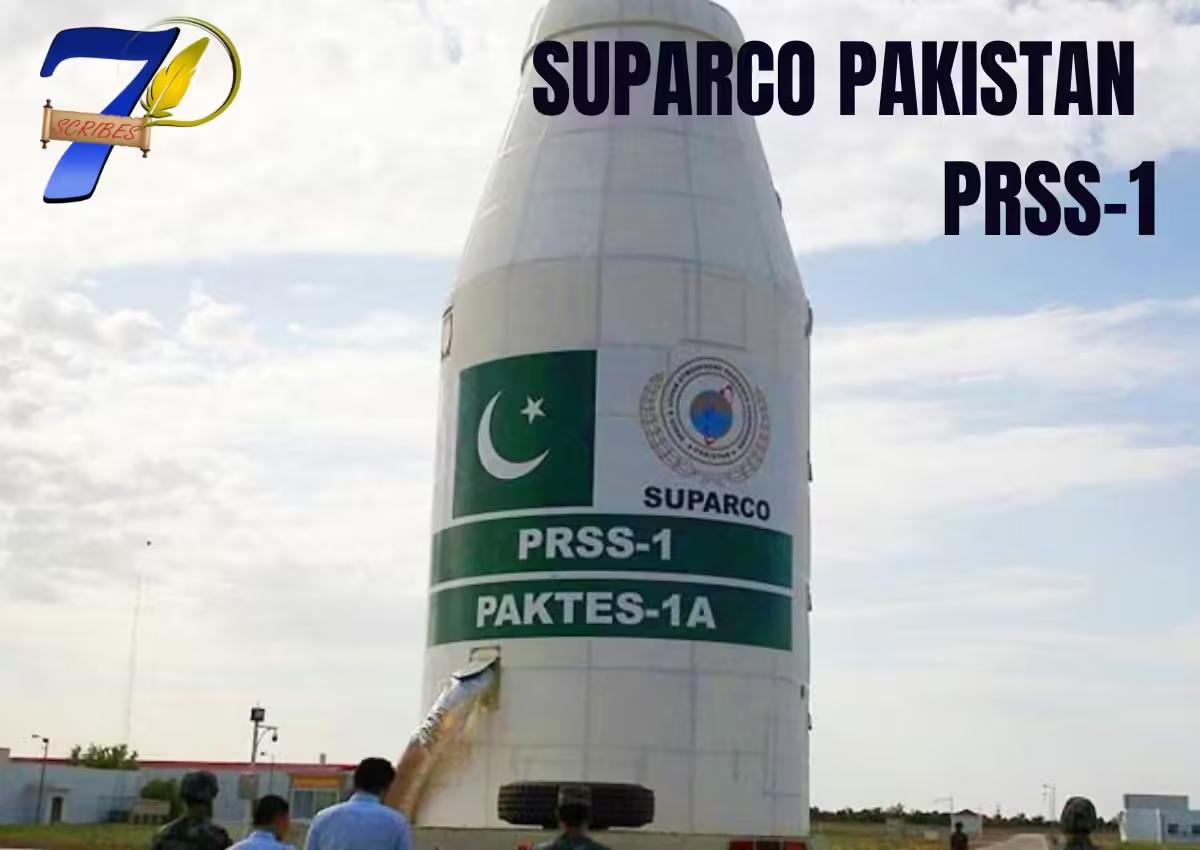The work on space exploration began not in recent centuries, but it took thousands of years. The roots of space exploration are found in ancient civilizations, i.e., Indians, Babylonians, Egyptians, Mesopotamia, etc. The contribution of this civilization cannot be underrated because today’s achievements and exploration are also results of this civilization. They used to study the sky , and night. They think about how the day and night change after a particular time; they also curious about the alternate seasons like spring, summer, autumn, and winter. From that time on, humans start to examine and explore the space to know what exists far and around earth. Dear readers, in this article you will know about the time line of ancient and modern space exploration practices and attempts, as well as the contributors (scientists or astronomers) who early think and start working on it.

Early Astronomical Observations: Footsteps to Space:
This paragraph will cover the ancient and early practices to examine space.
1. Early Civilizations (2000 BCE–300 BCE):
Early civilizations include baby loans, and Egyptians are the first explorers, or people who think and start systematically to know about the skies. For religious, navigational, or agricultural purposes, they trace the movements of the moon, stars, and planets. These practices laid the foundation of modern space exploration activities. The scientists who proposed early observation and results that
- Pythagoras (c. 570–495 BCE): He was the first scientist who proposed that the earth has spherical shape.
- Aristotle (384–322 BCE): He was the first one who said our planet Earth exists in the center of the universe, called the geocentric model.
- Aristarchus of Samos (310–230 BCE): In contrast to Aristotle, he proposed that the sun exits in the center, called the the heliocentric model. This model was rejecteded at that time.
2. Muslims Astronomers:
During the golden age of the island, numerous Muslim scientists played their role in every field of science (which we will cover in the upcoming articles). Inshallah, like other fields, Muslim scientists contribute to astronomy, which is helpful also in today’s space exploration. The scientists who work for astronomy are
- Al-Battani (858-929 CE):
The most famous Muslim mathematician and astronomer who has accurately the length of the solar year.
He accurately measured that there are 365 days, 5 hours, 46 minutes, and 24 seconds in a year. He also worked on trigonometry. He discovered the use of sine, cosine, and tangent in astronomical studies. He also worked on determining the position of the sun and moon.
- Al-Farghani (805–880 CE):
Al-Farghani was an author and astronomer who accurately measured the circumference of the earth.
As an author, he wrote books named “Kitāb fī Jawāmi‘ ‘Ilm al-Nujūm” (A Compendium of the Science of the Stars).
- Al-Sufi (903–986 CE):
Al-Sufi, also known as Alzophi in the west. He was the first astronomer who identified several celestial objects, including Andromeda Glaxey’s “Small Cloud.”
He also discovered and described the lunar sations and their influence on earth. He is also an author and wrote books. His most famous book is “Kitab al-Kawakib al-Thabitah” (The Book of Fixed Stars), in which he described the colors, madness, and positions of stars more precisely.
- Ibn Yunus (950–1009 CE):
Ibn Yunus (950–1009 CE) is an Egyptian astronomer who made a significant contribution to astronomy.
He developed an astronomical table, “Zij al-Kabir al-Hakimi,” that contained accurate data that has been helpful for centuries.
He used an astrolabe and an armillary sphere, which help in accurate measurement of celestial objects.
- Ibn al-Haytham (965-1040 CE):
The one of the most famous Muslim scientists who made significant contributions in optics and astronomy.
He used his understanding of optics in astronomical observations like the bending of lights and the apparent positions of celestial objects.
He worked on lunar and solar ellipses and accurately measured the height of the atmosphere.
There are other Muslim scientists who have made their contribution to astronomy.
3. The Copernican Revolution:
- Nicolaus Copernicus (1473–1543):
He brought change in the thought of people through his heliocentric theory. In his 1543 work, De revolutionibus or bium colestium, he proposed that the sun be present in the center of the universe rather than the earth.
- Johannes Kepler (1571-1630):
He described three laws of planetary motion, in which he describes how planets revolve the sun in an elliptical direction, contrary to a circle.
- Galileo Galilei (1564–1642):
He was one of the early scientists who used telescopes to observe space. He made groudbreaking discoveries like surfaces of the moon, phases of Venus, and moons of Jupiter. These observations provide significant evidence and support the heliocentric theory. His observation laid the foundation of modern observational astronomy.
4. The Journey of Rocketry:
Today, observations of astronomical objects are impossible without development in rocketry. There are several scientists who worked for it:
- Isaac Newton (1643–1727):
In 1687, Isaac Newton published his Principia, in which he published his laws of motion and universal gravity. This provides a theoretical way to space travel. The science behind rocket propulsion is Newton’s third, which states, “Every action has an equal and opposite reaction.”
- Konstantin Tsiolkovsky (1857-1935):
He is the father of astronautics and a Russain School teacher and physicist. In his famous Tsiolkovsky rocket equation, he explains the mechanisms for rocket flight. He is the first one who proposed the idea of space travel through rockets.
- Robert H. Goddard (1882-1945):
He is an American physicist and known as the father of modern rocketry. He built and launched the first man-made world’s liquid-fueled rocket in 1926. He laid the technical foundation for future space explorations.
- Hermann Oberth (1894–1989):
A German-Hungarian physicist made significant contributions to space travel. In his book The Rocket of Interplanetary Space (1923), he inspired many future astronomers.
5. V-2 Rocket:
During World War II, a German aerospace engineer, Von Braun, developed the V-2 rocket. This was the first long-range guided missile used as a weapon in the war. After the war, he worked in the United States, worked on the project Operation Paperclip, and played a crucial role in developing rockets that land humans on moons.
6. The Space Age and Modern Exploration
Due to development of rocket during World War II, the space explorations become easy and ble. After the war, the key achievements in space explorations are:
- Sputnik 1 (1957):
After the war, the Soviet Union launched its first rocket to space, named Sputnik 1, on October 4, 1957, marking the start of the journey in space. It was the first artificial satellite to revolve around in the earth in an orbit about 500 km above. From that time on, the space race was started between the U.S. and the Soviet Union.
- Yuri Gagarin (1961):
The first human to travel to space happened on April 12, 1961, Soviet cosmonaut Yuri Gagarin. He was the first human to travel in space.
- NASA and Apollo Program:
During this space, the United States established an institution to work on space explorations in 1958 known as the National Aeronautics and Space Administration (NASA). Under the leadership of Wernher von Braun, NASA’s Apollo program made the first successful man landing on the moon in 1969. The first humans who landed on the moon are Neil Armstrong and Buzz Aldrin, and they also walked on the moon.

- James Web Telescope:
James Web Telescope is launched in NASA collaboration with the European Space Agency and Canadian Space Agency in December 2021. It has more advanced capabilities, especially in the infrared spectrum. It is located at the second lagrange point (L2), which is about 1.5 million kilometers from earth.







